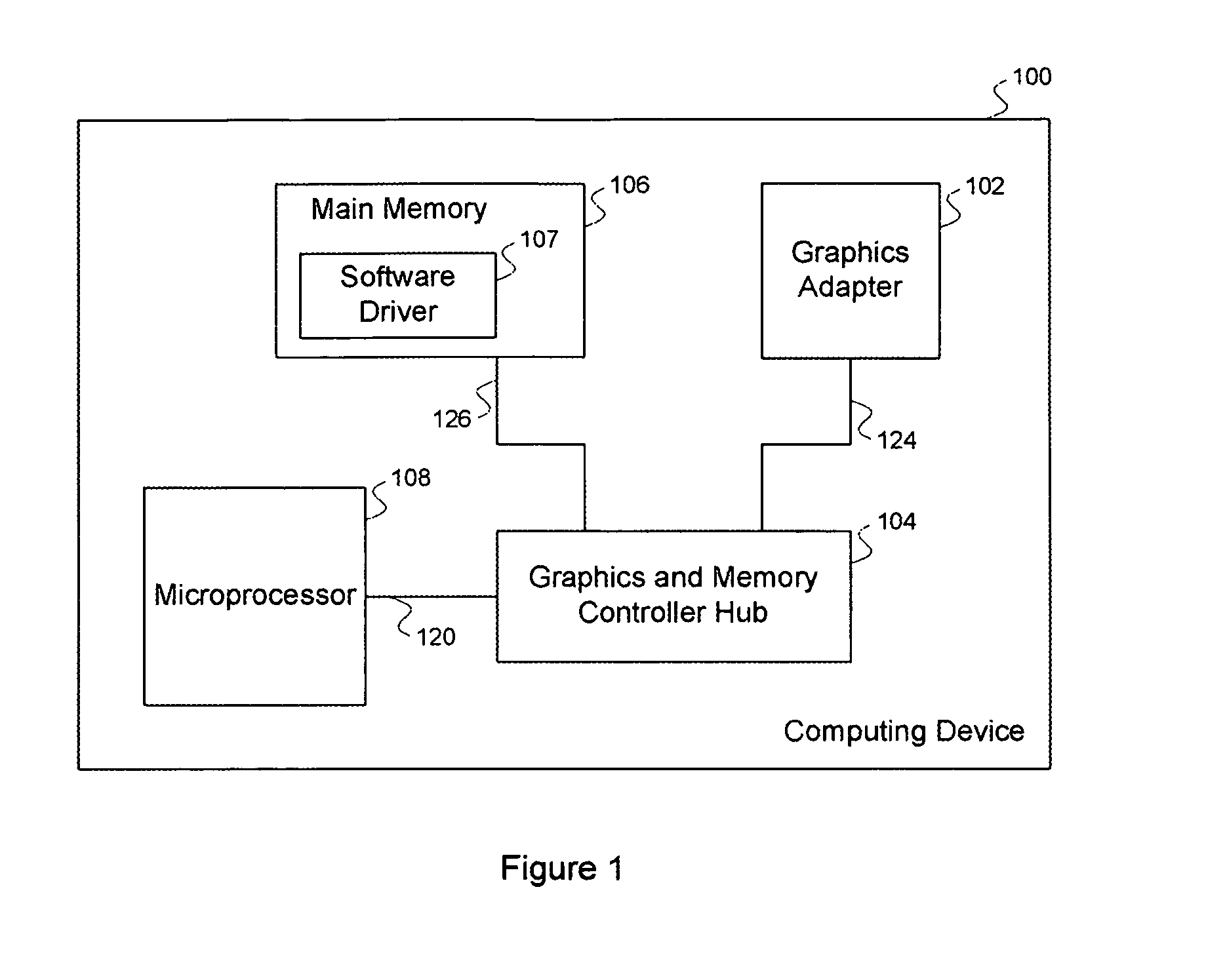Efficient matrix multiplication on a parallel processing device
- Summary
- Abstract
- Description
- Claims
- Application Information
AI Technical Summary
Benefits of technology
Problems solved by technology
Method used
Image
Examples
Embodiment Construction
[0033]FIG. 1 illustrates a computing device 100 in which one or more aspects of the invention may be implemented. As shown, the computing device 100 includes a microprocessor 108, a main memory 106, a graphics adapter 102 and a graphics and memory controller hub 104. The main memory 106 includes a software driver program 107. The graphics and memory controller hub 104 is coupled to the microprocessor 108, the main memory 106 and the graphics adapter 102 through hardware interfaces 120, 126 and 124, respectively. The computing device 100 may be a desktop computer, server, laptop computer, palm-sized computer, personal digital assistant, tablet computer, game console, cellular telephone, or any other type of similar device that processes information.
[0034]FIG. 2 illustrates the graphics adapter 102 of FIG. 1, according to one embodiment of the invention. As shown, the graphics adapter 102 includes a graphics processing unit (“GPU”) 200 and a global memory (“GMEM”) 202. The GPU 200 inc...
PUM
 Login to View More
Login to View More Abstract
Description
Claims
Application Information
 Login to View More
Login to View More - R&D
- Intellectual Property
- Life Sciences
- Materials
- Tech Scout
- Unparalleled Data Quality
- Higher Quality Content
- 60% Fewer Hallucinations
Browse by: Latest US Patents, China's latest patents, Technical Efficacy Thesaurus, Application Domain, Technology Topic, Popular Technical Reports.
© 2025 PatSnap. All rights reserved.Legal|Privacy policy|Modern Slavery Act Transparency Statement|Sitemap|About US| Contact US: help@patsnap.com



